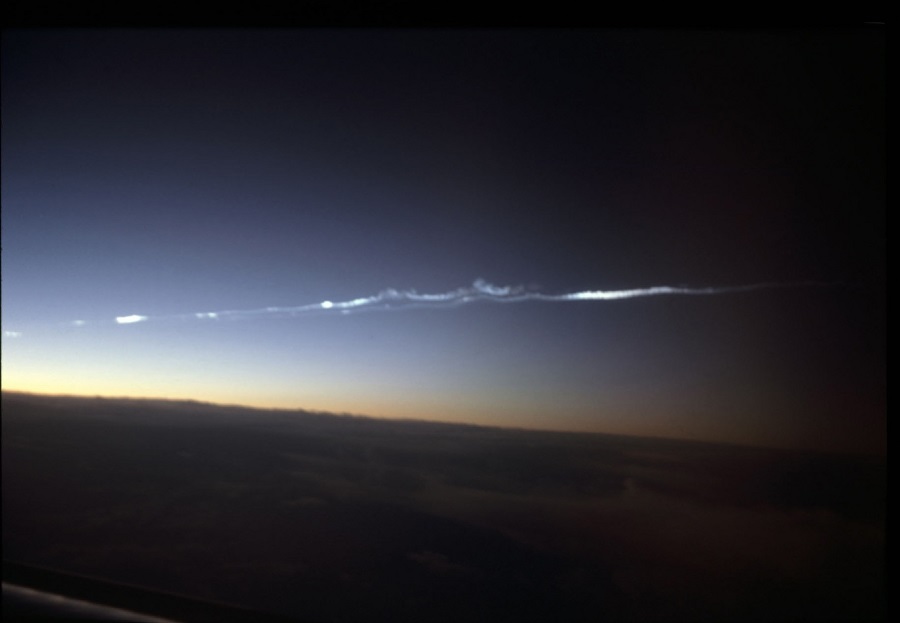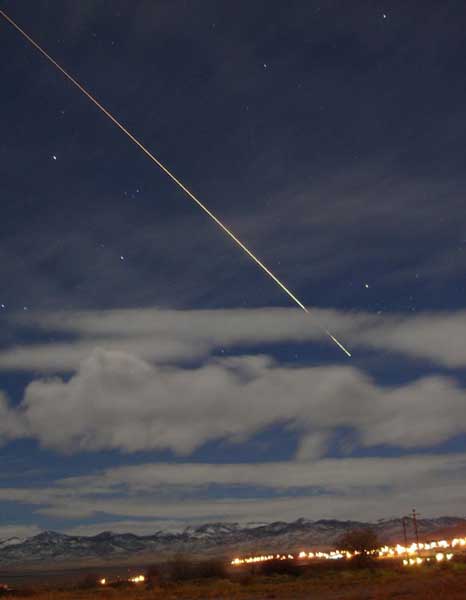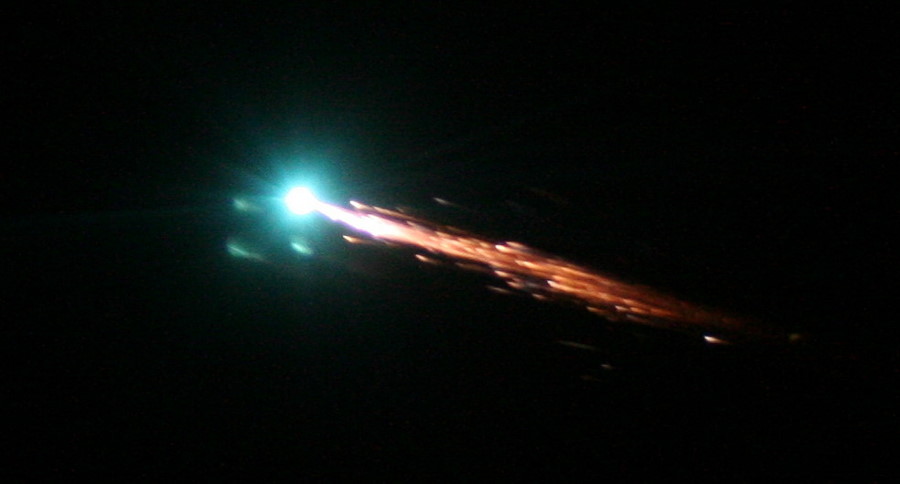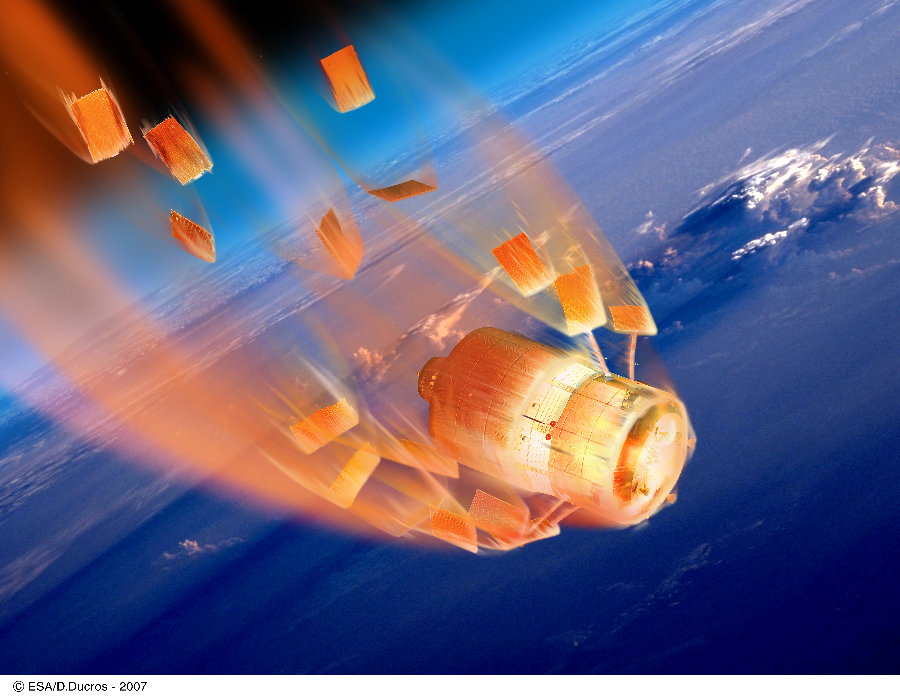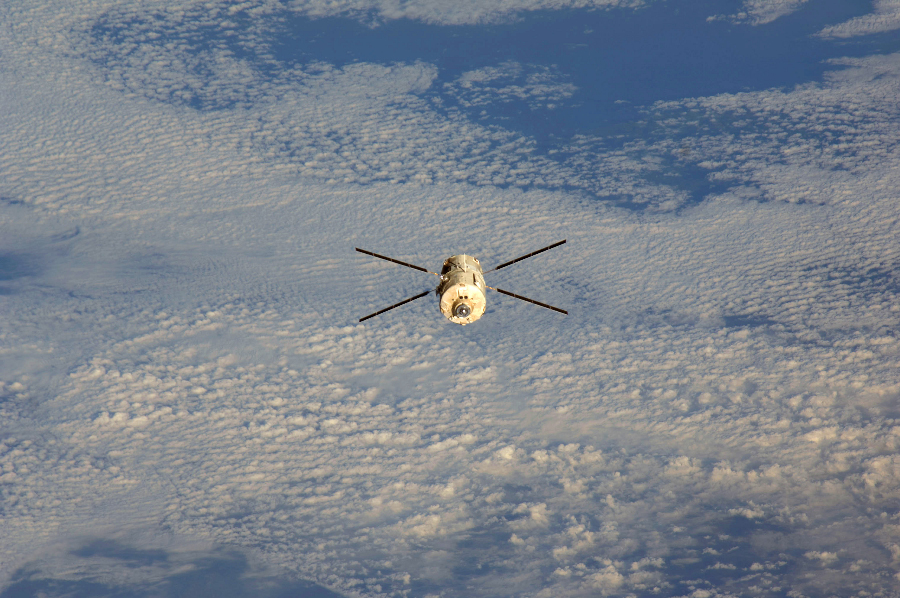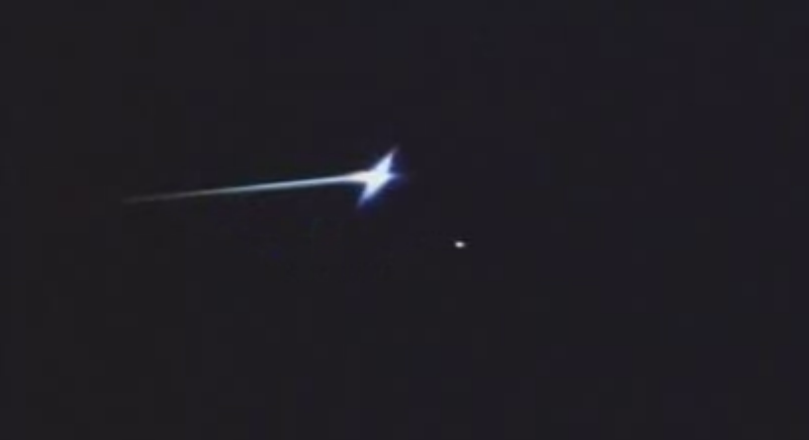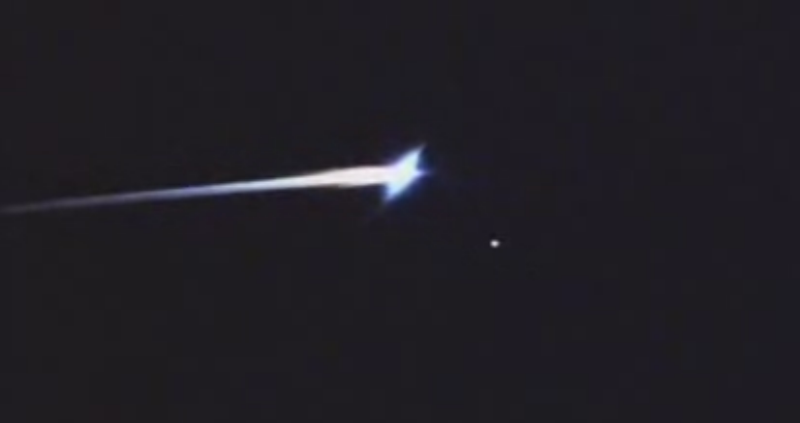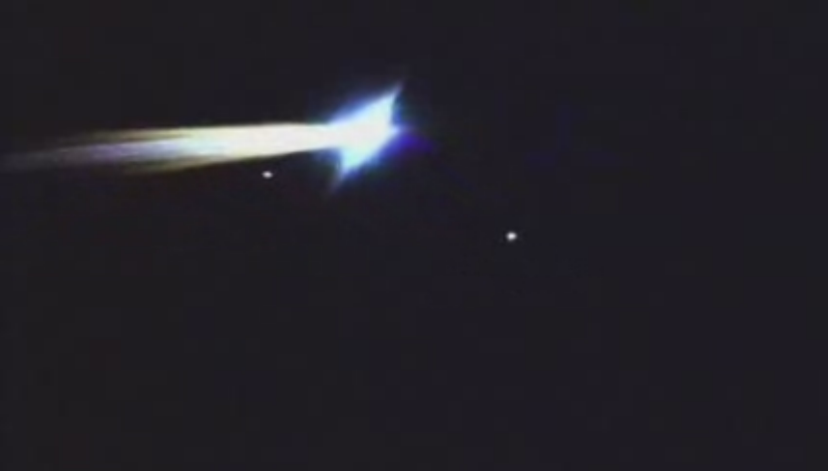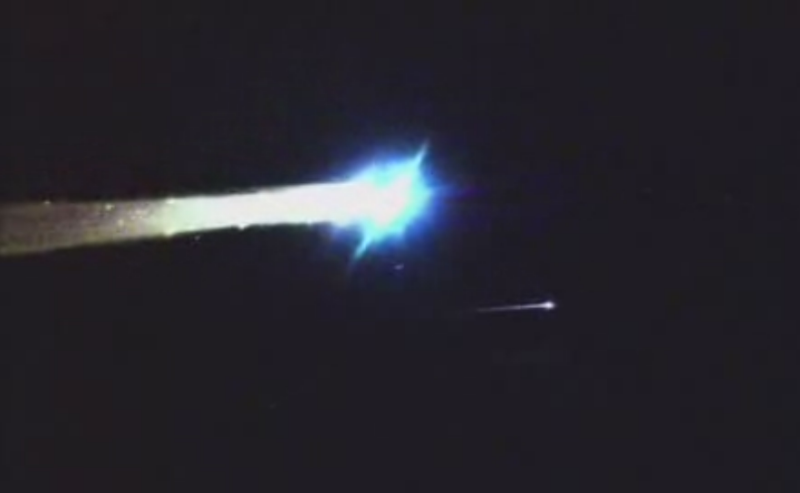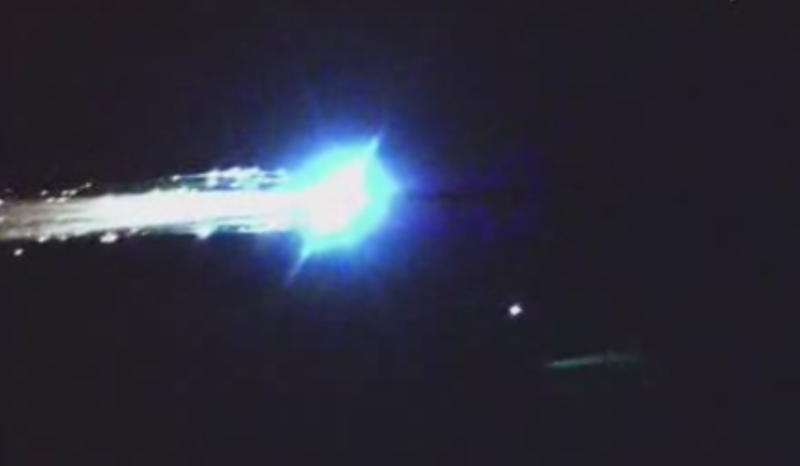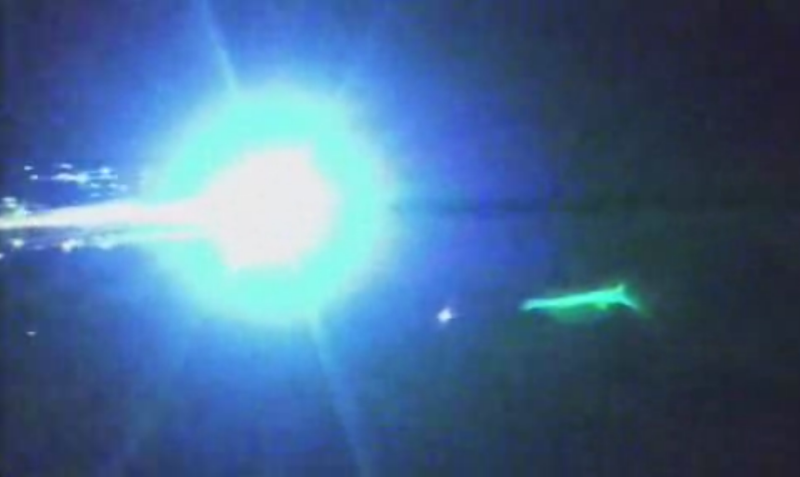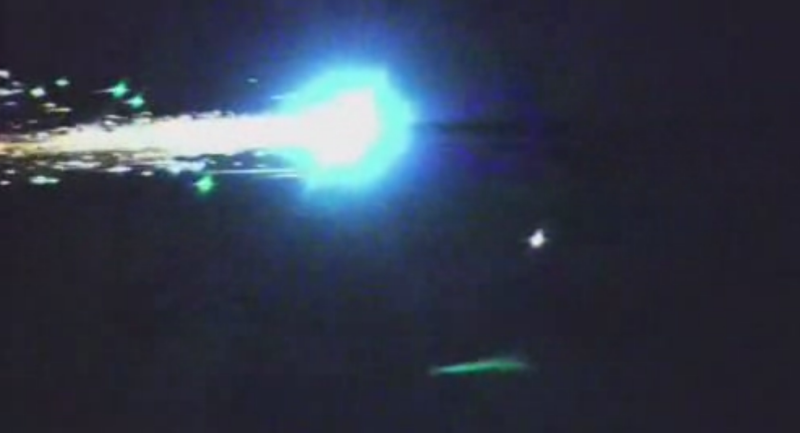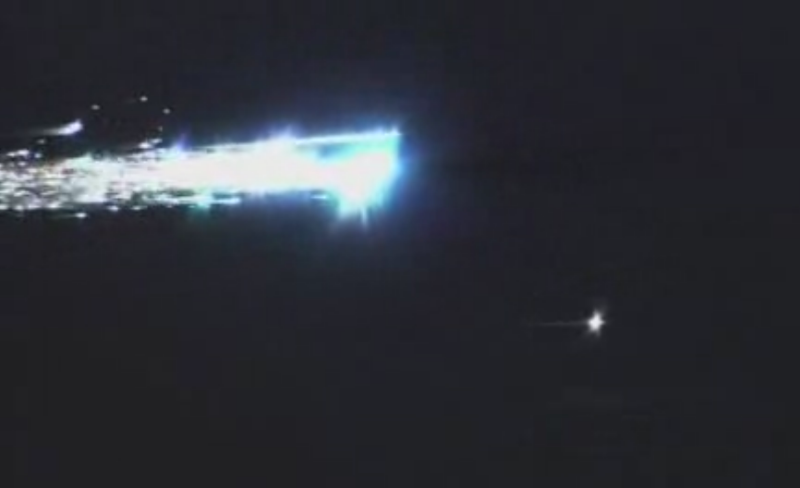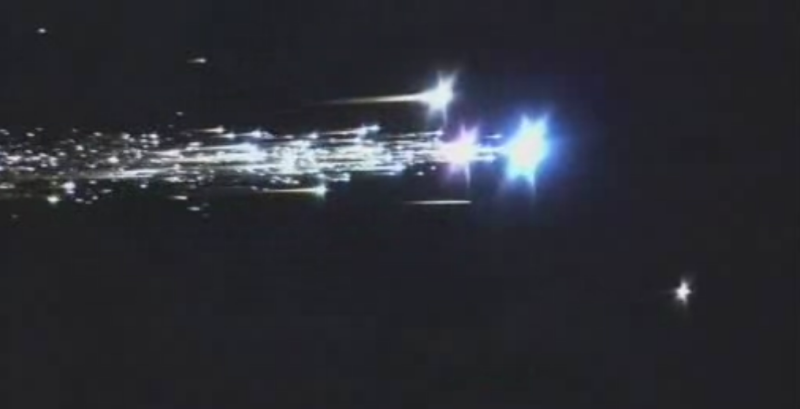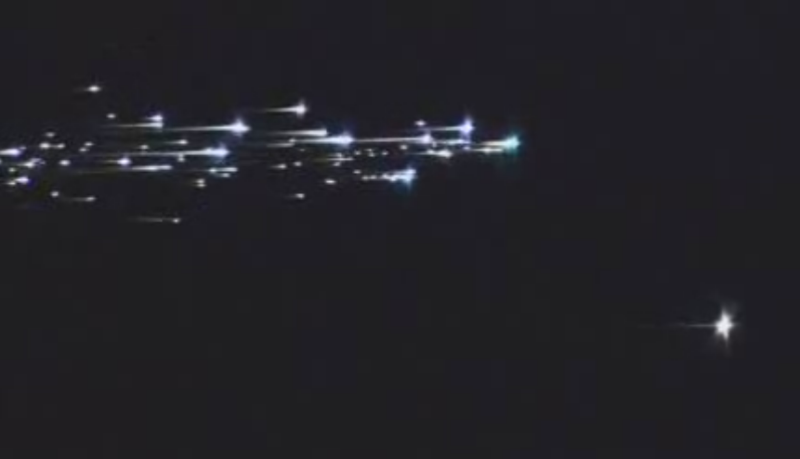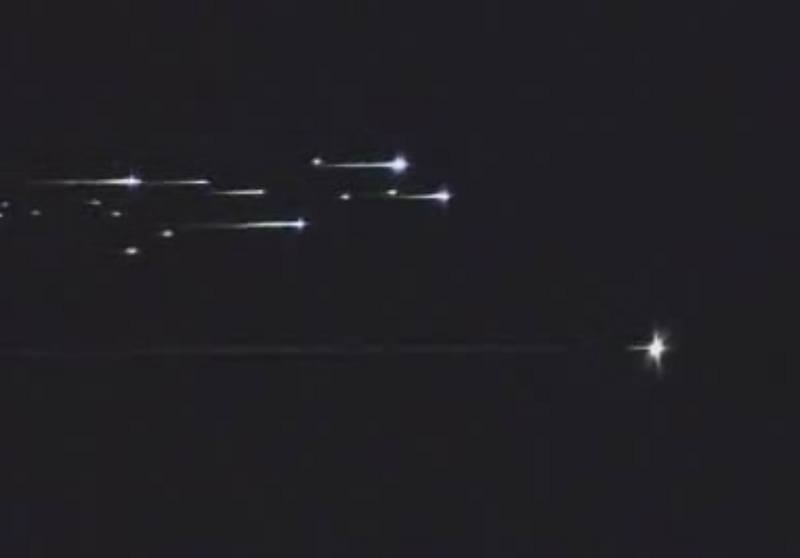|
The UFO Files False UFO Sightings Re-Entry of Spacecraft |
|||||||||||||
|
18th April 1970 ..
Peter Gabelish, a passenger on the same on the Air New Zealand flight, was on his way from the US back to Sydney. He, along with the other passengers, viewed the re-entry fireball and few minutes later, took this photo of the trail left by Apollo 13. The spacecraft travelled from right to left. SOURCE: Honeysuckle Creek |
|||||||||||||
|
January 15th 2006
Comet 81P/Wild2 and the Stardust Mission The Life of Comet Wild 2 On January 15th 2006 at 3 am a green fireball shot across the sky of West USA and its cause, a 1 m capsule, parachuted safely onto the Utah desert. This capsule had just completed a 7 year, 5 billion km journey to Comet 81P/Wild 2 and back to Earth. The space mission is called Stardust and we are learning about the composition of comets from it. |
|||||||||||||
| NASA Stardust Capsule Reentry Jan 15, 2006 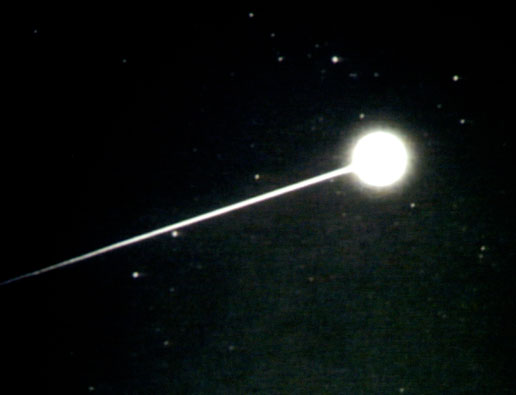 The following movie was taken from a
NASA DC-8 aircraft as the Stardust sample return capsule entered the
atmosphere in the early morning hours of Jan. 15, 2006. At the time this
video was shot, the DC-8 was flying at the eastern edge of the Nevada
state line. The Stardust sample return capsule had a soft landing in the
US Air Force's Utah Test and Training Range at 3:10 am MST.
Image credit: NASA/Ames Research Center Related Links:
Papers:
|
|||||||||||||
|
29 September 2008 ..
A spectacular video recorded 29 September 2008 by the observation team chasing ATV Jules Verne as it plunged through the atmosphere. The video shows the spacecraft breaking up over the Pacific Ocean beginning at about 15:36 CEST. Credit: ESA/NASA.
Image taken from the ISS after ATV's undocking on 5 September 2008 |
|||||||||||||
|
13 June 2010 ..
NASA Team Captures Hayabusa Spacecraft Reentry A group of astronomers from NASA, the Japan Aerospace Exploration Agency (JAXA) and other organizations had a front row seat to observe the Hayabusa spacecraft's fiery plunge into Earth's atmosphere. The team flew aboard NASA's DC-8 airborne laboratory, packed with cameras and other imaging instruments, to capture the high-speed re-entry over an unpopulated area of central Australia.
..
..
..
..
..
..
..
..
..
YOUTUBE LINK
Japanese spacecraft 'Hayabusa' - spectacular re-entry intoUploaded on Jun 13, 2010 Intensified camera narrow-field view of the Hayabusa Re-entry recorded from NASA DC-8 over Australia. Earth's atmosphere (viewed at 39,000') Uploaded on Jun 13, 2010 After traveling six billion kilometers in seven years, the Japanese space probe Hayabusa (meaning Peregrine Falcon) incinerated on re-entry after jettisoning a capsule expected to contain the first asteroid dust ever collected. The capsule parachuted to Earth near Woomera, the Australian Defence Force facility supporting the western world's largest defence systems test and evaluation range Hayabusa, the $US200 million ($235.74 million) project launched in 2003, landed on the asteroid in 2005 and is believed to have collected samples of material from the surface that may shed light on the solar system's origin and evolution. Scientists hope to study how and when the asteroid was formed, its physical properties, what other bodies it may have been in contact with, and how solar wind and radiation have affected it. Hayabusa was originally due to return to Earth in 2007, but a series of technical glitches -- including a deterioration of its ion engines, broken control wheels, and the malfunctioning of batteries -- forced it to miss its window to manoeuvre into the Earth's orbit until this year. If Hayabusa is indeed carrying asteroid samples, it would be only the fourth space sample return in history -- including moon matter collected by the Apollo missions, comet material by Stardust, and solar matter from the Genesis mission. NASA Press Release below: MOFFETT FIELD, Calif. -- A group of astronomers from NASA, the Japan Aerospace Exploration Agency (JAXA) and other organizations are flying to the other side of the world for a front row seat and a rare opportunity to study a spacecraft's targeted fiery descent through Earth's atmosphere. A Douglas DC-8 airborne laboratory departed yesterday evening from NASA's Dryden Aircraft Operations Facility at Palmdale, Calif., carrying nearly 30 scientists and their instruments to Melbourne, Australia to make final preparations for the highly-anticipated return of JAXA's Hayabusa spacecraft. This luminous re-entry will mark the end of the spacecraft's seven-year journey to bring a sample of asteroid Itokawa back to Earth. Hayabusa is expected to fall to Earth over a vast, unpopulated area of Australia at approximately midnight locally, or 7 a.m. PDT, on Sunday, June 13, 2010. Earlier this week, JAXA announced it successfully completed the guidance of the Hayabusa spacecraft, so that it will land in the Woomera Prohibited Area in Australia. "Hayabusa is hurtling toward Earth at an immense speed, comparable to that of an asteroid impact," said Peter Jenniskens, the observation campaign's principal investigator and a scientist at NASA's Ames Research Center, Moffett Field, Calif., and the SETI Institute, Mountain View, Calif. "The capsule that protects the asteroid sample will be only 6,500 feet ahead of the rest of the spacecraft, which will break into numerous pieces, essentially making it a man-made meteor." Jenniskens and the team of astronomers onboard the DC-8 will have their instruments secured near the plane's specialized windows. This, paired with their altitude of 39,000 feet far above light pollution and clouds, will enable the scientists to study what happens when the spacecraft and sample return capsule heat up high in the atmosphere. When Hayabusa reaches an altitude of 190,000 feet, its heat shield will experience temperatures of more than 5,000 degrees Fahrenheit, while the gas surrounding the capsule will reach 13,000 degrees Fahrenheit - hotter than the surface of the sun. The team's primary goal during the airborne mission is to study the Hayabusa capsule's re-entry to gain technological insight into the heat shield that designers and engineers can use while developing future exploration vehicles. Because of Hayabusa's unique heat shield material, shape and the tremendous interplanetary re-entry speed of 7.58 miles per second, scientists expect its descent will provide new, valuable information about heat shields for computer models of re-entry conditions. JAXA's Hayabusa is expected to be the second fastest man-made object to return to Earth; NASA's Stardust sample return capsule set the record re-entry speed of 7.95 miles per second in January 2006. SOURCE: Wikipedia |
|||||||||||||
| FAIR USE NOTICE: This page contains copyrighted material the use of which has not been specifically authorized by the copyright owner. Pegasus Research Consortium distributes this material without profit to those who have expressed a prior interest in receiving the included information for research and educational purposes. We believe this constitutes a fair use of any such copyrighted material as provided for in 17 U.S.C § 107. If you wish to use copyrighted material from this site for purposes of your own that go beyond fair use, you must obtain permission from the copyright owner. | |||||||||||||
|
|
